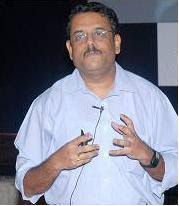At the core of Service Strategy is the act of Transforming resources in to Valuable Services. Service Strategy represents Vision & Goals, Service design, transition and operations are progressive phases of the lifecycle that represent change and transformation. Continuous service improvement represents learning and improvements. The Structure of ITIL Lifecycle is an organizing framework.
The ITIL Service Strategy uses the Systems approach which is based on the “4P Strategies” model defined by Prof. Henry Mintzberg. According to Prof. Mintzberg, “Strategy, is one of those words that people define in one way and often use in another way without realizing the difference”. One of the main reason why strategies fail is “because of the assumption that thought must be independent of action”. The key for Crafting Strategies is establishing intimate connection between Thought & Action.
4P Strategy merges formulation and implementation in to a fluid process of Learning through which creative strategies evolve.
· Perspective gives the sense of purpose , direction, and governing set of Values. A Strategic Perspective articulates the business Philosophy of interacting with customers and the manner in which services are provided.
· Plan is often referred to an Intended Strategy; it is the deliberate course of action, charting path towards strategic objectives. Plan defines the organization, structure, policies, processes & methods for execution.
· Positioning becomes the mediating force between the Organization and the environment i.e. between internal & external context. Position describes the decision to adopt a well-defined stance.
· Patterns describe a series of consistent decisions and actions over time. They are the basis for Emergent Strategies, distinctive patterns in action reinforced over time by repeated success.
All Strategy making walks on two feet, one deliberate, the other emergent. The use of all 4Ps, recognizes both intended as well as emergent strategies. Best practice service strategies mix these to maintain control while fostering learning; see the Big picture while deciding on details.
Prof. Henry Mintzberg describes the characteristics of Managing under the three dimensions of Art, Science & Craft-
Art encourages ideas & insights that give shape to Vision & paint the Big picture. Walking on two feet, one leg on Perspective and the other on Plan helps us to define and articulate the Vision. Perspective provides the sense of Purpose & Direction to formulate the Vision and Planning takes us to chart out the concrete steps in terms of resources, methods & timelines to implement the Vision. This is can be compared to Art, where one needs to see the Big Picture and same time paints the picture with intimate knowledge of material in hand.
Science provides structure and order, through systematic analysis and logical steps. Science walks on Plan and Positioning to Create the outcomes in line with the articulated Vision. Plan defines the organization structure, roles, responsibilities, process and technologies Positioned to Serve the customer environment. Positioning becomes the mediating force between the Organization and the environment i.e. between internal & external context.
And Craft makes connections between the intended strategy and the emerging patterns, building on tangible experiences. Craft Walks on the legs of Positioning and Patterns. Like a Potter who sits before a lump of clay on the wheel, while his hands are working on the clay, his mind is making connections using his past experience and future prospects to Create the best product. He is in harmony with the material at hand, feeling of intimacy, long experience and commitment to envisioned future product. As we implement the Vision using a Plan and move to the operations run phase, everything may not work exactly as per the Plan i.e. as per the intended/deliberate strategies. Craft helps us to see the Patterns i.e. the emerging strategies and connect the dots to bridge the Gap between Vision & Execution, Theory & Practice, Knowing & Doing.
Copyright Sunil P Rangreji


1 comment:
Nice article. NetApp is fortunate to have accomplished leader.
Ravi C
Post a Comment